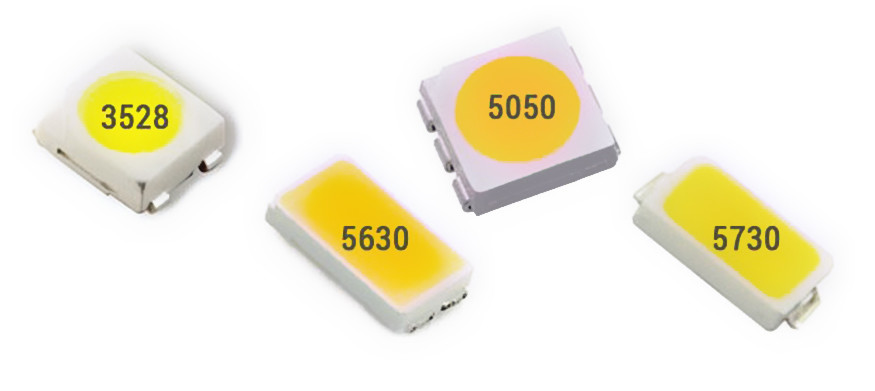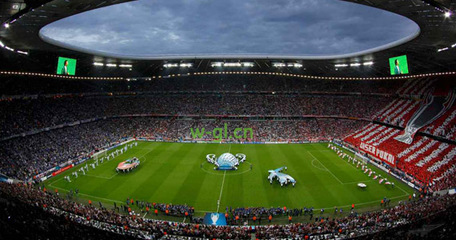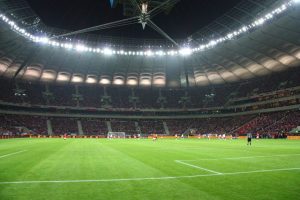LED is small and lightweight, low driving voltage, full color, long life, high efficiency, vibration resistance and easy light control characteristics, which provide superior conditions for lighting systems designed for different places and purposes. People are accustomed to looking at things under the sun. For general lighting, what people need is mainly a light source close to the quality of sunlight, so white LED is an important indicator of semiconductor lighting technology.
Because a single LED has low power and low brightness, it is not suitable to be used alone. For this reason, multiple LEDs must be assembled together to design a practical LED lighting system. However, there is still a certain distance between white LEDs and general lighting requirements, and there are still many technical and cost issues that need to be resolved urgently.
The main technical overview of the semiconductor lighting system
1) Heat management of the lighting system
Generally speaking, LEDs are called cold light sources, because the principle of LED light emission is that electrons directly emit photons through recombination without the need for heat. However, due to the existence of Joule heat, LEDs emit heat at the same time, and for high-power and multiple LED applications, the heat accumulation is too small and cannot be underestimated. LEDs are different from traditional lighting sources such as incandescent lamps and fluorescent lamps. Too high temperature will shorten or even end its service life. Moreover, LEDs are temperature-sensitive devices, and their efficiency drops sharply when the temperature rises. Therefore, system structure design and heat dissipation technology development are also issues that LED applications need to face. Since forced air cooling is generally undesirable in light sources, as the input power increases, heat sinks and other methods to enhance natural convection cooling play an increasingly important role in the design of LED lamps and light sources.
2) Improve color rendering
At present, white light LEDs generally use blue light emitting LEDs to superimpose yellow light emitting yttrium aluminum garnet (YAG) phosphors excited by blue light to synthesize white light. Since its luminescence spectrum only contains blue and yellow spectra, there are problems of high color temperature and low color rendering index, which does not meet the requirements of general lighting. The sensitivity of the human eye to chromatic aberration is much higher than the sensitivity to light intensity. For lighting, the color rendering of the light source is often more important than the luminous efficiency. Therefore, adding an appropriate amount of red-emitting phosphors and maintaining a high luminous efficiency is an important issue in LED white light illumination.
3) Secondary optical design of the lighting system
Traditional lamps have long used incandescent lamps and fluorescent light sources as references to determine the optical and shape standards of the lamps. Therefore, the LED lamp system should consider abandoning the traditional lamps and the assembly method of the LED light-emitting module, and fully consider its optical characteristics. It is specialized for LED light sources. Design different lamps.
The design content of the optical system mainly includes the following aspects:
① Determine the shape of the optical system, the number of LEDs and the size of the power according to the needs of the lighting object and luminous flux.
② Design a combination of several LED light-emitting tubes into a “secondary light source” of point light source, ring light source or surface light source, and calculate the illumination optical system according to the combined secondary light source,
③ It is very important to control the light distribution of each LED tube on the “secondary light source” that constitutes the design of the illumination optical system.
Because the light beam emitted by the LED is concentrated, it is easier to control, and no reflector is needed to focus the light, which is beneficial to reduce the depth of the lamp. For example, using a flat mirror optical system, a large surface can be illuminated with only 1 or 2 LEDs. The depth of the lamp is very thin, and the use of light guide technology, the LED is directly installed next to the light pipe, which can greatly reduce the volume occupied by the light source and other components, and make an ultra-thin lamp.
4) Integration of power supply, circuit and lamps
When designing luminaires for LEDs, you need to pay attention to an issue that incandescent and fluorescent luminaire designers rarely need to pay attention to is the power supply. Most incandescent lamps are powered directly by AC power lines, so no power source is required. Fluorescent lamps use ballasts to complete the power supply function. However, the LED needs a special power supply and driving circuit to be matched with it, and the integration of the power supply and the luminaire system should be considered when designing the luminaire.
The biggest characteristics of semiconductor lighting and solar power generation are environmental protection, energy saving, long life and safety. The combination of solar power generation and semiconductor lighting to complete the conversion of photoelectric to electro-optical is the best combination. Natural energy-utilizing independent semiconductor lighting fixtures that use solar battery power as a power source are energy-saving, environmentally friendly, and have a long life. It also saves related wires and supporting facilities, and has a huge market space.
5) Improve the reliability of the system
LED light source is called long-life lamp, as a solid light-emitting device, its theoretical life is more than 100,000 hours, and its service life is much longer than traditional light sources. Therefore, when it is used in some occasions that are not easy to replace and maintain, its maintenance cost can be greatly reduced. . However, this advantage cannot be seen in many practical applications at present. Instead, users can see that the light decay is serious and the lifespan is short. It will be broken after less than 10,000 hours. This is because the LEDs used by everyone are The Ф3~Ф5 mm LED, which is the most commonly used indicator in the electronics industry, uses a simple electronic circuit to increase the current to increase its luminous intensity, but the LED only obtains a brief high brightness, but loses the expected life of the LED. Therefore, LEDs should be carefully selected in the design of semiconductor lighting fixtures, and high-power LEDs should be used as the light source of the lighting equipment.
6) Increase luminous flux and reduce price
At present, a single 1W LED device has a luminous flux of about 25 lm. The price of good quality is more than US$5, and the price of poorer is US$3. The luminous flux of 25 lm is too small for general lighting. The luminous flux of an ordinary 60W incandescent lamp is greater than 700 lm. That is to say, to replace traditional lighting, multiple LED devices are required, plus a drive circuit and a lamp housing. , Lamp holders, etc., such a high cost is the biggest problem with white LEDs in general lighting. In particular, the efficiency is currently 25 to 45 lm/W, which needs to be further improved.
Technology development trend
1) Abandon the current LED lamps and lanterns is only a traditional design method of lamps and LED light-emitting modules, we must fully consider the optical characteristics of LEDs, and develop special LED lamps.
2) In the design of power supply and control circuit, the power supply should change the commonly used capacitor step-down and impedance divider application methods, design a reasonable low-current constant-current source circuit, and adopt the clock cycle modulation method in the drive current to improve The stability of LED lamps, while further improving the efficiency of the power supply.
3) In terms of control circuit design, it is necessary to develop in three aspects: centralized control, standard modularization, and system scalability.
4) In the current situation of limited LED luminous efficiency and luminous flux, give full play to the characteristics of LED color diversity, and develop color-changing LED lighting control circuits.
5) Leverage the advantages of LED and develop a lighting system combining LED lighting and photovoltaic systems.
6) Develop an integrated flat-panel light source system suitable for indoor lighting. The development trend is to integrate LED lighting fixtures with buildings.
7) Develop LED lighting simulation system to speed up product development.
8) Develop the integration technology of solar energy and high-brightness LED to solve the matching and control technology of solar battery system and LED lighting system.





